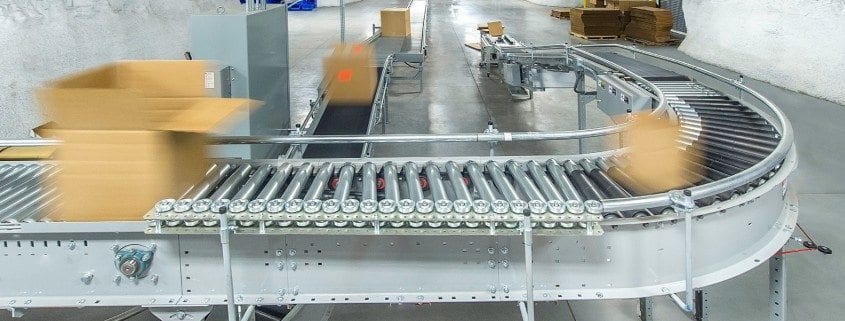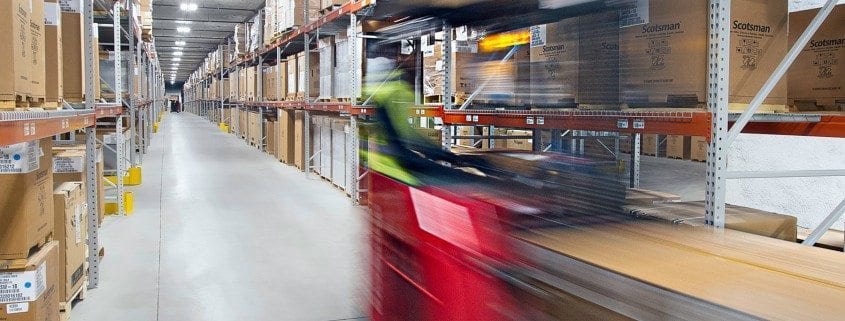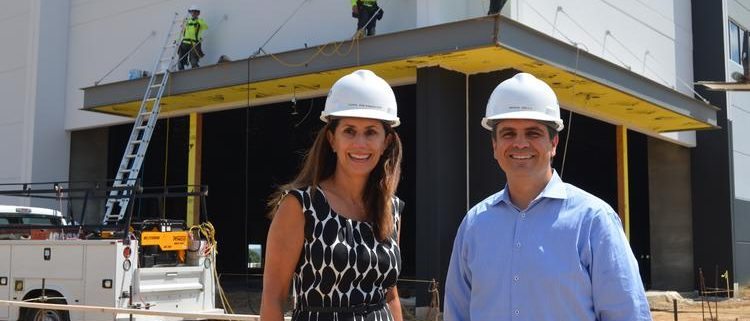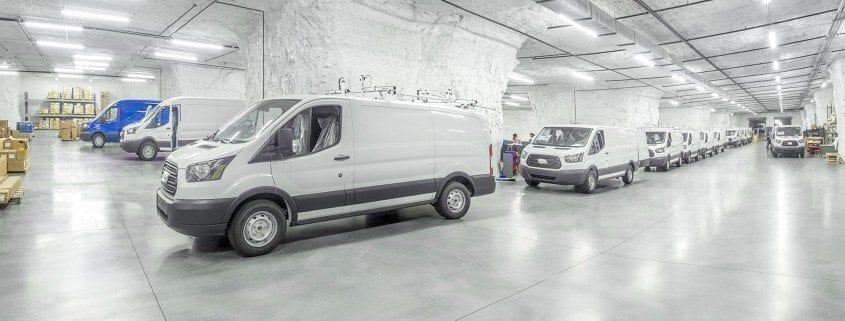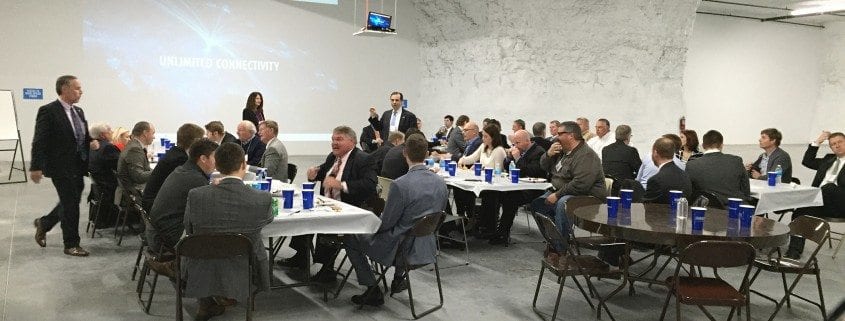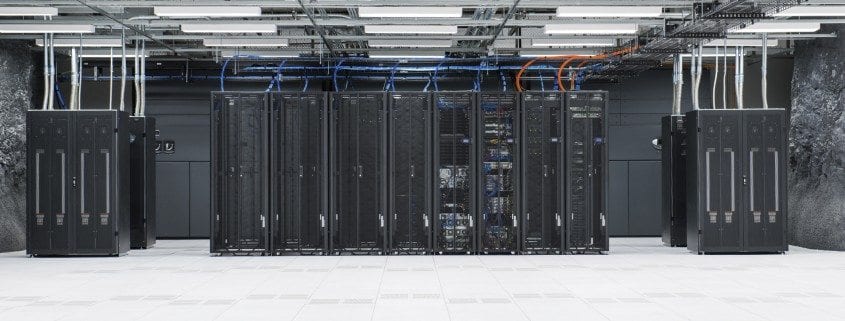Industrial Boom Sweeps Across KC
E-commerce, auto companies drive wave of spec projects.
Christina Cannon and Matt Valley – Heartland Real Estate Business
When it comes to the Kansas City industrial market, some developers have a build-it-and-they-willcome mentality.
Kansas City’s central location is attracting a number of e-commerce companies and strengthening the heavy automotive industry presence that has been a part of the city’s fabric for some time. To deal with demand and keep Kansas City on the radar, developers are ramping up construction on speculative projects.
“Tenants often don’t have time to come to town and build,” says Daniel Jensen, principal at Kessinger Hunter. “So if they come to a market like Kansas City that doesn’t have a certain kind of product available, they just keep going to the next market.”
For many tenants, however, that shouldn’t be an issue thanks to the amount of industrial space set to come on line in the near future. According to Costar, there was 5.3 million square feet of overall industrial space under construction at the end of the second quarter this year. This is on top of 2.8 million square feet of space that has already been delivered in the first half of the year.
“In the last three to four years there has been about 4.5 to 5 million square feet of new product brought on line each year and the majority of it has been getting absorbed,” says Jensen. “Everyone has gotten a whiff of fresh cookies in the air and has decided that they ought to be baking their own fresh cookies.”
Jensen notes that Kansas City is a fastpaced market, and when tenants want to set up shop, they want to do so quickly.
“People don’t want to come to the town and say, ‘we need to be up and operational in 18 months,’” says Jensen. “They want to come to town and say, ‘I need to order racks in 60 days, and I need to be operable in six months.’ That lends itself to a larger amount of spec space versus built-to-suit opportunities.”
Logistics Park continues streak
Leading the pack in speculative construction are NorthPoint Development and BNSF Railway with their 1,700-acre intermodal Logistics Park Kansas City. The 548,333-square-foot Inland Port XV came on line during the second quarter, and the duo has two more buildings totaling 1.5 million square feet to be delivered by the end of the third quarter.
“Logistics Park Kansas City is by and far the largest producer of spec space in the market and has been for the last several years, and that has everyone’s attention,” says Jensen. “They’ve been successful thus far getting deals done and absorbed, but are they going to be able to continue that pace? We just don’t know. Time will tell.”
Experts attribute some of the industrial park’s success to a shift in how companies are shipping goods.
“It used to be if a company was going to have three distribution centers they would have one on the West Coast, one on the East Coast and one in the Midwest. If they put one in the Midwest they generally went to Chicago or Dallas, somewhere with a larger population base,” says Jensen. “Now, we’re seeing the significance of Kansas City. You can get to about 90 percent of the population of the continental United States within two days by truck.”
Logistics Park Kansas City is the largest intermodal facility in the United States in terms of tonnage that passes through via rail, and it is the third largest trucking facility in the country.
Distribution hubs are becoming more important to e-commerce than population hubs, according to Mike Bell, vice president and general manager of commercial real estate for Hunt Midwest.
“I think initially when e-commerce was taking off you were seeing a lot of the distribution centers focused on the population density centers,” says Bell. “Now people are saying, ‘we’re going to locate in an area where we can touch the most amount of the country.’”
Shipping hubs in demand
Proximity to the major hubs of shipping companies is also an important factor for many industrial tenants in the area, says Bell. For this reason, the southwest corner and the northeast corner of Kansas City are seeing the brunt of construction and lease activity.
“Part of what we see is that tenants are locating in centers where they’re near FedEx and UPS,” says Bell. “In the northeast part of Kansas City we are near both FedEx and UPS, and are within 20 minutes of the airport. If somebody needs next-day shipping, we’re the last stop. These e-commerce companies can take an order from somebody at 7 or 8 p.m. and still get it shipped out the next morning.”
According to CoStar, of the 5.3 million square feet of industrial space under construction at the end of the second quarter, 4 million of that is in South Johnson County. The North of the River submarket welcomed over 900,000 square feet of the of 2.8 million square feet that was delivered to the Kansas City industrial market by mid-year.
Ford Transit provides a boost
E-commerce companies aren’t the only ones fighting for space in the industrial landscape. Similar to how Internet giants want to be near shipping companies, automotive suppliers and upfitters want to be near Ford Motor Co. and General Motors.
Roughly five years ago, Ford made the decision to transition its Econoline van model to the Transit van model, and locate that manufacturing operation in Kansas City. The new Transit vans can be upfitted to serve as contractor vehicles, shuttle buses or even ambulances, and every one is manufactured in Kansas City.
“When Ford made that choice it was a very monumental decision in Kansas City because the state of Missouri has since passed legislation to give automotive companies and other advanced manufacturing companies significant incentives,” says Bell. “That has propelled a lot of companies to come to Kansas City.”
Companies relocating facilities in Kansas City to become part of the automotive fabric include many manufacturers, suppliers and upfitters.
“Every time Ford or GM retools, it creates a feeding frenzy,” says Jensen. “Tenants that need facilities come racing to town just to be close to GM and Ford.”
One space that these support companies love to flock to is SubTropolis, the world’s largest underground business park. Hunt Midwest developed the park, which contains 6 million square feet of leased space and the ability to expand by another 8 million square feet. A surface business park providing even more options complements SubTropolis.
“We offer a unique perspective,” says Bell. “We are developing 2,500 acres of land on the surface and then below it we are developing virtually the same footprint.”
In addition to Ford, tenants catering to automotive industry that lease space in SubTropolis include Knapheide Manufacturing Co., Adrian Steel, Ground Effects and Leggett & Platt Commercial Vehicle Products, among others. So many upfitters are occupying space in the industrial cave that SubTropolis has even coined the moniker “Automotive Alley.”
“The temperature is constant, the humidity is constant,” says Bell. “For Ford to manufacture the Transit or the Ford F150, SubTropolis allows them to maintain a high level of quality and standards.”
SubTropolis does data
With tenants occupying anywhere from 10,000 square feet to 500,000 square feet, SubTropolis doesn’t just accommodate automotive companies. A data center opened in 2014 is bringing the industrial market full circle by attracting e-commerce users.
“We found having a data center relates closely to our e-commerce customers, because our e-commerce tenants need higher speed Internet connectivity,” says Bell. “With our data center and the fiber carriers that we have, we are able to connect our tenants with that.”
Bell notes that for e-commerce companies to survive they need both the logistics of being near shipping companies like FedEx and UPS and also bandwidth and connectivity, both amenities SubTropolis can provide.
“I see the data center as the cash register of e-commerce,” says Bell. “Somewhere there is a data center that’s running all the servers to allow e-commerce to flourish.” But not only can having a data center in the same area save on delivery speeds, it also adds a layer of security.
“That’s a big advantage,” continues Bell. “From a security standpoint, we are able to control all of our entrances, and because of our government tenants, we are required to have a high level of security.”
LightEdge Solutions, a cloud service provider, colocation and consulting company, was the first tenant at the 400,000-square-foot SubTropolis Technology Center and employees 200 people in the underground, hightech labyrinth.
What’s next?
Professionals immersed in the Kansas City industrial market agree about one thing — the market is booming. But for how long?
“Driving around SubTropolis and our Hunt Midwest Business Center, I’m seeing all of these ‘help wanted’ and ‘now hiring’ signs,” says Bell. “That to me sends the sign that the tenants are productive, their businesses are growing and they have a need.”
Jensen believes that all of this activity may be a new baseline, though the industry should prepare for the regular ups and downs within this framework.
“There most definitely is a cycle and even the new norm is going to have its downturn and its upturn. Larger users are finding Kansas City attractive and want to be here for various reasons, but without a doubt the feeding frenzy will slow at some point, and people will call an end to that cycle.” says Jensen.
“We’re playing musical chairs, and the music is going to stop and there’s going to be a few folks without seats. But having said that, I think the industrial market — the user market — is healthy.”
